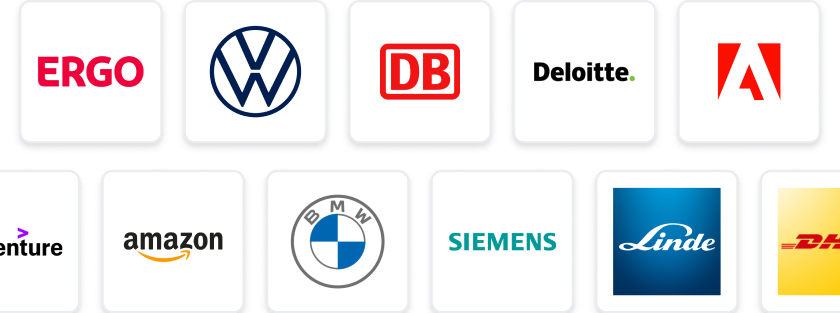At a Glance
- Tasks: Design and optimize systems for a cutting-edge space launch vehicle.
- Company: Join a pioneering company in the aerospace industry focused on innovative space solutions.
- Benefits: Gain hands-on experience and mentorship while working on groundbreaking projects.
- Why this job: Be part of a team shaping the future of space exploration with impactful engineering work.
- Qualifications: Bachelor’s or Master’s in Aerospace, Mechanical, or related field required.
- Other info: Ideal for those passionate about aerospace and eager to tackle complex engineering challenges.
The predicted salary is between 43200 - 72000 £ per year.
About the Company Our client is seeking an experienced Design Engineer to support system routing, including electrical harnesses and fluid networks, for a cutting-edge space launch vehicle and its associated ground equipment. In this role, you will manage key workstreams and provide mentorship to junior engineers, playing a critical role in technical development. About the Role Design and optimise systems models, routing for electrical harnesses, and fluid systems for the launch vehicle. Produce structural and mechanical components and assemblies for the launch vehicle and ground support equipment, including test and assembly fixtures. Provide hands-on engineering support for prototype development and testing. Manage multiple tasks with shifting priorities, supporting analysis and manufacturing across the product development lifecycle through iterative design. Responsibilities Design and optimise systems models, routing for electrical harnesses, and fluid systems for the launch vehicle. Produce structural and mechanical components and assemblies for the launch vehicle and ground support equipment, including test and assembly fixtures. Provide hands-on engineering support for prototype development and testing. Manage multiple tasks with shifting priorities, supporting analysis and manufacturing across the product development lifecycle through iterative design. Qualifications Bachelor’s or Master’s degree in Aerospace, Mechanical, or a related engineering field. Proven experience in routing projects for harnesses and fluid networks, ideally for flight or space-grade applications. Proficient in CAD (SOLIDWORKS, CATIA, NX) and in producing technical and production drawings following relevant standards. Required Skills 6+ years in engineering design, ideally of high-performance or flight-critical components. Experience across the entire lifecycle of mechanical engineering projects. Strong knowledge of aerospace materials, properties, and relevant design tools. Solid understanding and application of GD&T, along with familiarity with composite materials and associated manufacturing processes. Preferred Skills Understanding of kinematics, material selection, metallurgy, and coatings for space applications. Familiarity with spacecraft structural loads, mechanical testing, and cryogenic fluids. Experience with industry standards and specifications (e.g., MIL-HDBK, ECSS-E-HB-32, NASA-STD).
Design Engineer employer: Micro IT Global
Contact Detail:
Micro IT Global Recruiting Team
StudySmarter Expert Advice 🤫
We think this is how you could land Design Engineer
✨Tip Number 1
Make sure to showcase your experience with routing projects for harnesses and fluid networks in your conversations. Highlight any specific projects you've worked on that relate to flight or space-grade applications.
✨Tip Number 2
Familiarize yourself with the latest trends and technologies in aerospace materials and design tools. Being able to discuss recent advancements can set you apart during interviews.
✨Tip Number 3
Prepare to demonstrate your proficiency in CAD software like SOLIDWORKS, CATIA, or NX. Consider bringing examples of technical drawings or models you've created to illustrate your skills.
✨Tip Number 4
Network with professionals in the aerospace industry, especially those who have experience with high-performance or flight-critical components. They can provide valuable insights and potentially refer you to opportunities.
We think you need these skills to ace Design Engineer
Some tips for your application 🫡
Tailor Your CV: Make sure your CV highlights relevant experience in aerospace or mechanical engineering, especially focusing on routing projects for harnesses and fluid networks. Include specific examples of your work with CAD software like SOLIDWORKS or CATIA.
Craft a Strong Cover Letter: In your cover letter, emphasize your 6+ years of experience in engineering design and your familiarity with high-performance components. Mention your ability to manage multiple tasks and shifting priorities, as this is crucial for the role.
Showcase Technical Skills: Clearly outline your proficiency in GD&T and your understanding of aerospace materials and manufacturing processes. If you have experience with industry standards like MIL-HDBK or NASA-STD, be sure to include that as well.
Highlight Mentorship Experience: Since the role involves providing mentorship to junior engineers, include any relevant experience you have in mentoring or leading teams. This will demonstrate your leadership skills and ability to support technical development.
How to prepare for a job interview at Micro IT Global
✨Showcase Your Technical Expertise
Be prepared to discuss your experience with CAD software like SOLIDWORKS, CATIA, or NX. Highlight specific projects where you designed and optimized systems models, especially for electrical harnesses and fluid networks.
✨Demonstrate Problem-Solving Skills
Expect questions that assess your ability to manage multiple tasks with shifting priorities. Share examples of how you've successfully navigated challenges in previous engineering projects, particularly in high-performance or flight-critical environments.
✨Emphasize Mentorship Experience
Since the role involves providing mentorship to junior engineers, be ready to discuss your experience in guiding others. Share specific instances where you supported the development of less experienced team members.
✨Familiarize Yourself with Industry Standards
Research relevant industry standards and specifications such as MIL-HDBK, ECSS-E-HB-32, and NASA-STD. Being knowledgeable about these will demonstrate your commitment to quality and compliance in aerospace engineering.
